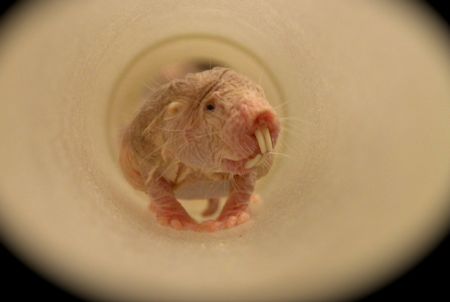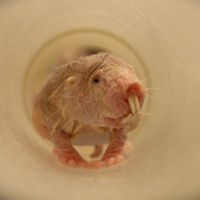
Naked mole rat
Scientists at the University of Liverpool and the Genome Analysis Centre (TGAC) have investigated the naked mole rat’s resistance to cancer, identifying key genomic variations that may have contributed to the evolution of this unusual species.
The naked mole rat is an exceptionally long-lived and cancer-resistant rodent native to East Africa. The new study presents a higher-quality assembly of the rodent’s genetic structure to previous sequences of the species genome, enabling the research community to benefit from this key data.
The study, in collaboration with Broad Institute, Uppsala University and Harvard Medical School, re-analysed the naked mole rat genome using this improved assembly that revealed further candidate genes of potential relevance to adaptive changes in the context of ageing and cancer.
With a life span of over thirty years, not only is the naked mole rat the longest-lived rodent, but it is also extremely resistant to neoplasia (tumours), and therefore is an ideal model for research on longevity, cancer and disease resistance.
Co-author from the University of Liverpool’s Institute of Integrative Biology, Dr Joao Pedro De Magalhaes, added: “A high-quality, annotated naked mole rat genome is essential for the research community to develop the sophisticated molecular biology tools necessary to study these amazing animals.
“By creating a genome resource for the naked mole rat with a high-quality genome assembly, we aim to facilitate studies into this fascinating animal and help establish the naked mole rat as the first long-lived model for bioscience research underpinning health.”
Federica Di Palma, co-author and Director of Science at TGAC, said: “The new study provides a key resource for research on the naked mole rat and its many evolutionary adaptations, including longevity and resistance to diseases, as well as other traits, such as metabolic regulation, development, pain, and behaviour.
“We predict that studying a species so long-lived – particularly given its small body size – and with such an astonishing resistance to neoplasia, will help elucidate mechanisms and genes conferring longevity and cancer resistance in mammals that may have human applications.”
To help facilitate and encourage further research into this species, the team of scientists have developed a freely-available online portal, the Naked Mole-Rat Genome Resource, featuring the new genome sequence and the data results of their analysis.
The paper, titled: “The Naked Mole Rat Genome Resource: facilitating analyses of cancer and longevity-related adaptations” is published in Bioinformatics, Oxford Journals.
